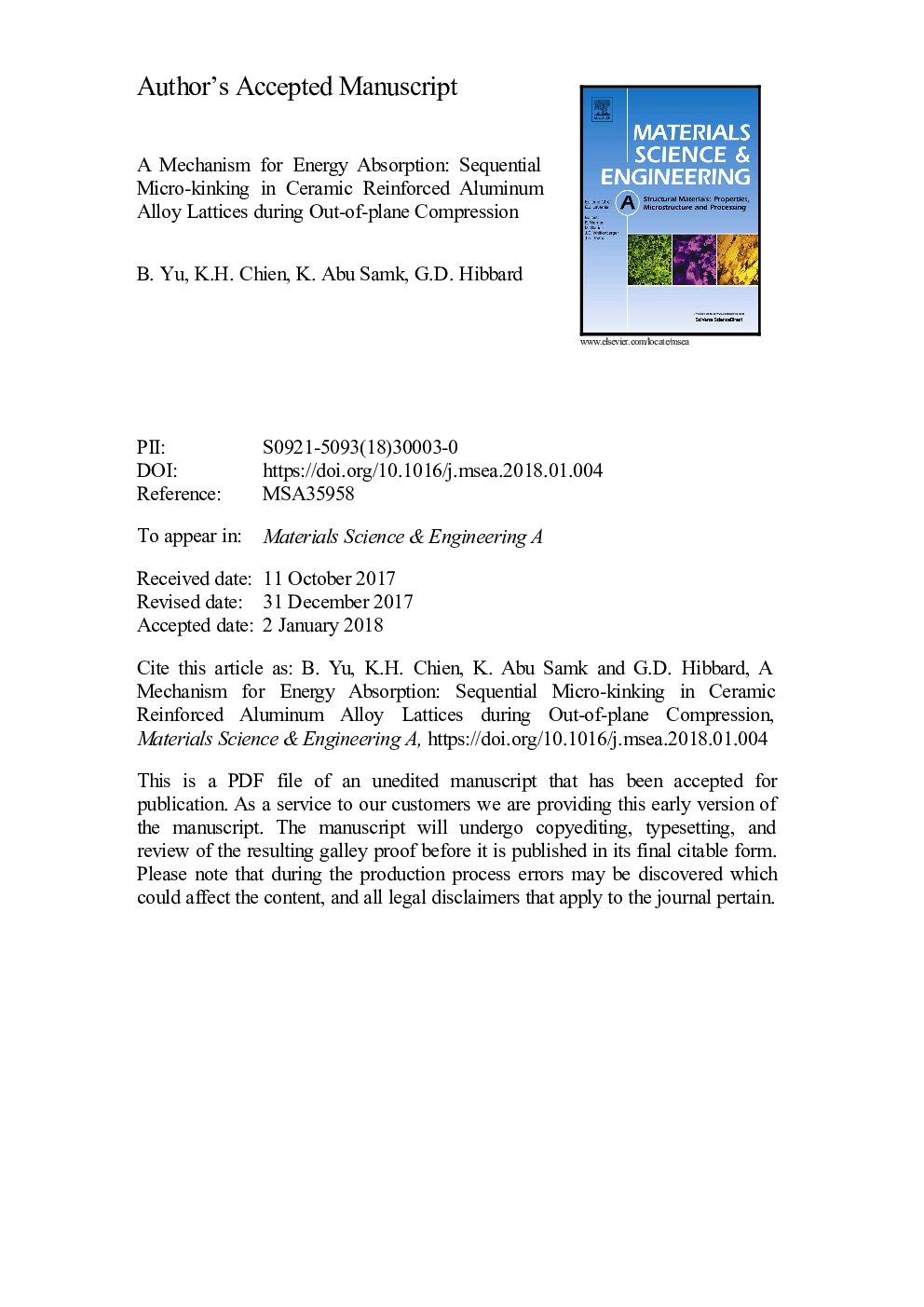| Article ID | Journal | Published Year | Pages | File Type |
|---|---|---|---|---|
| 7973431 | Materials Science and Engineering: A | 2018 | 38 Pages |
Abstract
The current study examines the out-of-plane compressive response of ceramic/aluminum hybrid lattice materials with an anodic alumina outer shell and an aluminum alloy core. The combination of increasing truss angle and oxide coating thickness results in a six-fold increase in compressive strength, two-fold increase in densification strain, twelve-fold increase in energy absorption per volume, and twenty-fold increase in energy absorption per mass. Such improvements are caused by the change in failure mode from mid-strut buckling to a hinge kinking mode as the oxide coating thickness increases. Microscopy and analytical modelling reveal that kink formation is most likely initiated by aluminum shear band formation followed by oxide rotation and fracture (analogous to micro-kinking in fiber composites). In terms of energy absorption, the best performing lattice materials in the current study were on par with the best available cellular materials in existing literature.
Related Topics
Physical Sciences and Engineering
Materials Science
Materials Science (General)
Authors
B. Yu, K.H. Chien, K. Abu Samk, G.D. Hibbard,
